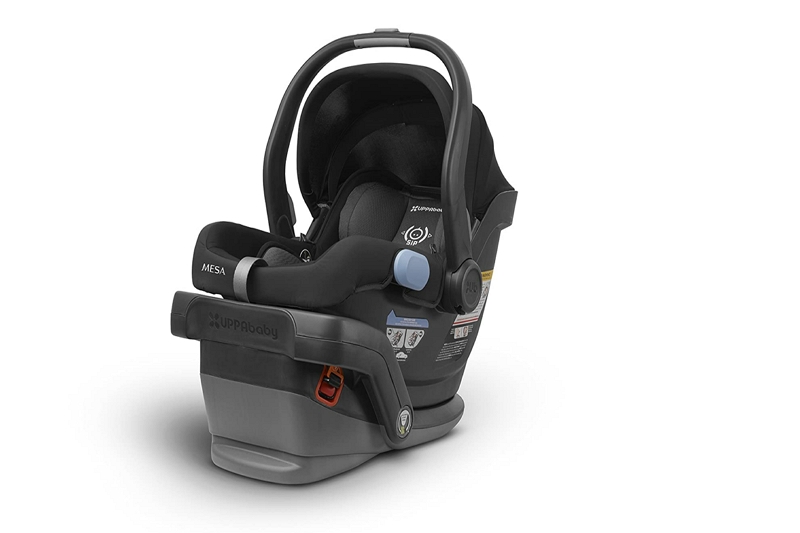In this article, you will learn How to install a toddler car seat.

Steps on Installing A Toddler Car Seat
Step 1. The first step in installing a car seat is to read the manual on your specific model. If you can’t find one, call the manufacturer for help and directions. The steps below will give some general guidelines on how to install most toddler seats:
It should sit tightly against the back of that vehicle’s seat (if it moves more than an inch side-to-side or front-to-back then reread those manuals)
Step 2. You’ll need two sets of hands – one person holds up part A while another tightens down screw B with a wrench/screwdriver/whatever tool comes with the seat, etc. I’ve found these rear-facing seats are easier if they’re installed so their backs face out toward traffic.
Step 3. Sit in the back seat and buckle yourself in. This will tell you how much slack there is when someone’s sitting there, what kind of access your little passenger has from that door to get into their carseat, etc.
Then have a helper install the seat while you watch/help out. The main goal is for both sides (left & right) to be even so it doesn’t tip one way or another.
What kind of car seat should a 40 lb child be in?
With a 40 lb child, you should be looking for an infant car seat that can support them up to 35 pounds or 30 inches. The first step is to make sure your baby fits in the one they are currently using and it isn’t outgrown.
If there’s room between their head and the top of the carrier; we don’t recommend buying another as this could affect how well it protects them if they were involved in an accident.
We also believe children should stay rear-facing until AT LEAST two years old which means each time you’re ready to move from forward-facing into a convertible booster seat, your child should weigh 40 pounds.
The last factor to consider is height. Once a child reaches the top weight limit for their carrier or convertible seat they may be ready to graduate into a booster seat that uses the car’s shoulder and lap belts instead of being attached with harnesses.
These need to have high backs because children don’t yet have strong enough neck muscles to support their head in an accident without help from a backrest until at least age 11-12 years old!
How many pounds is a backless booster seat?
A backless booster seat is recommended for children who are 40 to 100 pounds. The child should be at least four years old.
If you have a younger child, it may not be the right choice because there are other types of car seats available that can help your baby or toddler travel safely in the car until they reach their weight limit and height limitation.
All parents know how important safety is when driving with small children, so make sure to figure out what type of car seat will fit best into your family’s lifestyle.
Can I put a booster seat in the middle?
Booster seats are specifically designed for children that weigh more than 40 pounds and less than 80 pounds. In the event of an accident, a booster seat provides extra protection to keep your child safe in their car seat. They should be used with both lap-shoulder belts and harnesses because of this added safety.
This is especially true if you have a forward-facing car seat or a convertible car seat which means it can go from rear-facing to front-facing but without these types of restraints, there would not be any way to attach them securely into place as they do not have hooks like infant carriers do.
Booster seats work great on their own but there is also something called “booster mode” where you take away the back of the seat and just use it as a booster. This is great for older children that are too big to fit into car seats but not yet ready to ride in cars without some kind of restraint.
Does a booster seat need to be anchored in NSW?
Yes. A booster seat should always be anchored when in use, even if it has a high back and no strap covers are needed. Even though the seat belt fits your child correctly, the booster seat will still need to be secured with LATCH or another anchoring system that is available on the vehicle where you’re travelling for them to feel safe during travel. This helps ensure they stay put in their seats an entire trip!
When can a child sit in a booster seat without a back?
When can a child sit in a booster seat without a back? According to the American Academy of Pediatrics (AAP), children should stay in high-back belt-positioning boosters until they are at least four feet nine inches tall.
If your child is already above this height, then you do not have to use a booster with an attached back. However, most safety experts recommend that kids remain seated using some sort of restraint system up through age eight or even older as long as their legs still bend over the edge of the vehicle’s seat cushion while sitting back against it.
For more information about choosing and using car seats correctly see our guide here: Car Seat Selection & Use – NHTSA.
